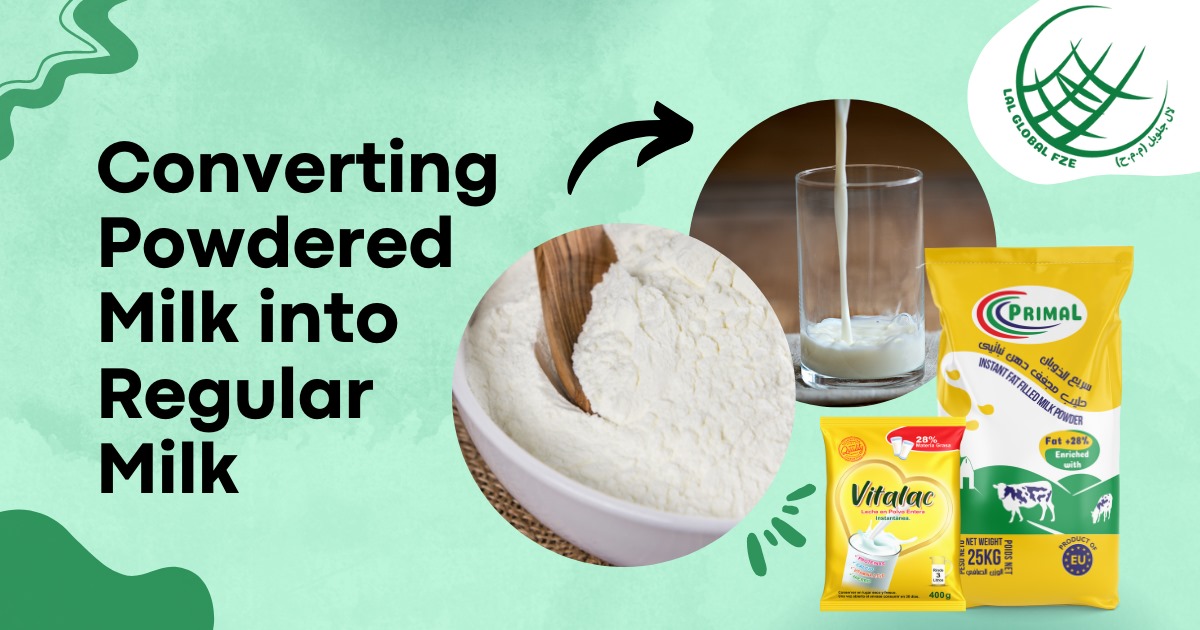Have you ever come across a recipe calling for milk, only to find your fridge bare? Or maybe you’re looking for a shelf-stable milk option for emergencies or camping trips? Well, powdered milk might be your perfect solution.
Powdered milk, is a shelf-stable dairy product made by removing most of the water content from regular milk. This process creates a lightweight, concentrated powder with several advantages, including a long shelf life, convenience, and cost-effectiveness.
Understanding Powdered Milk
There are different types of powdered milk available, each with slightly varying characteristics
- Whole Milk Powder
This powder is made from whole milk, retaining all the milk fat. It provides the most calories and the richest flavor compared to other types.
- Skimmed Milk Powder
This powder is made from skimmed milk, where most of the milk fat has been removed. It has a lower calorie content and a thinner consistency than whole milk powder.
- Non-Fat Dry Milk
This is another term for skimmed milk powder.
It’s important to note that powdered milk has a slightly different taste and nutritional content compared to regular milk. The taste can be a bit flat, and the powder contains a more concentrated amount of lactose (milk sugar).
Necessary Ingredients and Equipment
Converting powdered milk to regular milk is a simple process that requires just a few basic ingredients and tools
Ingredients
- Powdered milk (choose your preferred type – whole, skimmed, or non-fat)
- Water
Equipment
- Measuring cups
- Mixing bowl
- Whisk or spoon
- Storage container (optional)
Step-by-Step Process
Here’s a straightforward guide on how to reconstitute powdered milk
Step 1: Measuring the Powdered Milk
The standard ratio for reconstituting powdered milk is typically 1 cup of powdered milk to 4 cups of water. However, this ratio can be adjusted depending on your desired taste and thickness.
- If you prefer a stronger milk flavor or a thicker consistency for cooking, use a slightly smaller amount of water, like 3.5 cups instead of 4.
- Conversely, for a thinner milk for drinking or baking, you can use a bit more water, like 4.5 cups.
Step 2: Mixing with Water
- Pour the measured powdered milk into your mixing bowl.
- Gradually add the water to the milk powder, a little at a time. This helps prevent lumps from forming.
- Use your whisk or spoon to stir constantly as you add the water. Ensure all the powder dissolves completely and no lumps are remaining.
Step 3: Resting Time (Optional)
While not entirely necessary, letting the reconstituted milk rest for 30 minutes to an hour allows the flavors to develop and blend better. Additionally, you can refrigerate the mixture for a few hours or overnight for a colder, more refreshing drink.
Tips for Best Results
Here are some handy tips to ensure your reconstituted milk turns out perfectly
- Adjust the Ratio
As mentioned earlier, feel free to adjust the water-to-powder ratio based on your preference for taste and thickness.
- Enhance the Flavor
For a richer taste, consider adding a pinch of salt or a teaspoon of vanilla extract to your reconstituted milk.
- Water Matters
Using filtered or chilled water can improve the taste of your reconstituted milk.
- Proper Storage
Store your reconstituted milk in a sealed container in the refrigerator. It will typically stay fresh for 3-5 days.
Uses and Applications
Reconstituted milk offers a versatile solution for various purposes
- Drinking
Enjoy a refreshing glass of milk as a healthy beverage or as part of a balanced breakfast.
- Cooking and Baking
Use reconstituted milk in recipes that call for regular milk. It works perfectly in soups, sauces, casseroles, pancakes, and various baked goods.
- Other Uses
Add reconstituted milk to your coffee, tea, or smoothies for a creamy boost.
Conclusion
Converting powdered milk to regular milk is a convenient and cost-effective way to have milk on hand whenever you need it. It offers a long shelf life and can be easily adapted for various uses. So, next time you need milk, give powdered milk a try. However, it’s important to remember that powdered milk may not be suitable for everyone, especially those with lactose intolerance or specific dietary restrictions.
FAQ
Q. Does reconstituted milk have the same nutritional value as regular milk?
A: Powdered milk retains most of the nutrients found in regular milk, including protein, calcium, and vitamins. However, the vitamin D content might be slightly lower due to processing. If using fortified powdered milk, the vitamin content can be comparable to regular milk.
Q. Can I use powdered milk to make yogurt or cheese?
A: While it’s possible to make yogurt or cheese with powdered milk, the process can be trickier than using regular milk. The success rate might vary depending on the type of powdered milk used and the specific recipe. For best results, it’s recommended to use regular milk for these purposes.
Q. Is powdered milk a good option for emergencies or camping trips?
A: Absolutely. Powdered milk’s long shelf life and lightweight nature make it a perfect emergency or camping food. It requires minimal storage space and doesn’t need refrigeration until reconstituted.
Q. Where can I buy powdered milk?
A: Powdered milk is readily available in most grocery stores, typically in the baking aisle or near the dry milk products. You can also find it at bulk food stores or online retailers.
We hope this comprehensive guide empowers you to confidently convert powdered milk into regular milk and explore its various uses in your kitchen.

